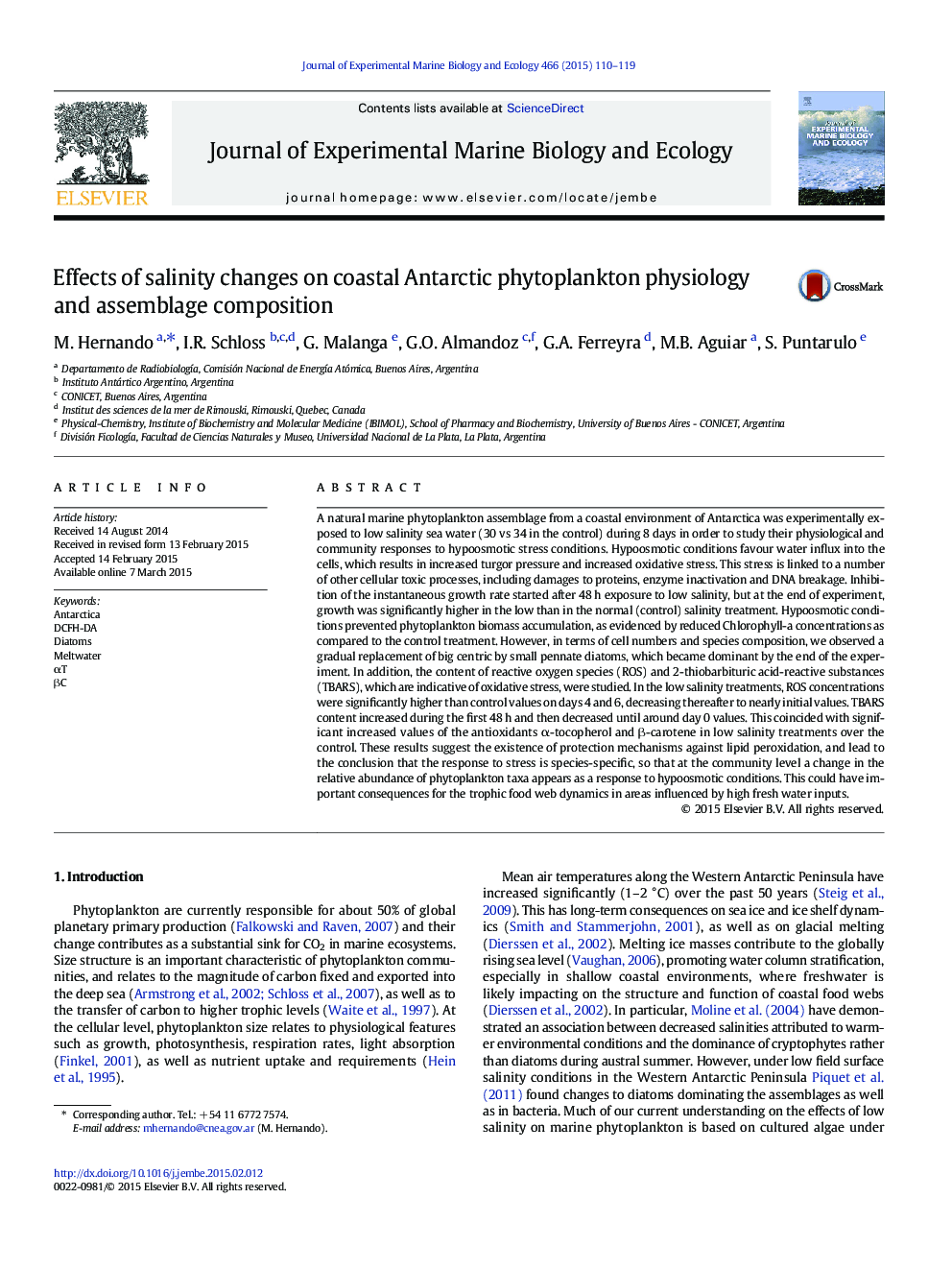| کد مقاله | کد نشریه | سال انتشار | مقاله انگلیسی | نسخه تمام متن |
|---|---|---|---|---|
| 4395476 | 1618409 | 2015 | 10 صفحه PDF | دانلود رایگان |
• Characterized meltwater-induced stress on phytoplankton assemblage from a Antarctic
• Evaluated the integration of taxonomy, physiology and quemistry responses
• The results could explain a longer-term ecological niche adaptation to meltwater.
A natural marine phytoplankton assemblage from a coastal environment of Antarctica was experimentally exposed to low salinity sea water (30 vs 34 in the control) during 8 days in order to study their physiological and community responses to hypoosmotic stress conditions. Hypoosmotic conditions favour water influx into the cells, which results in increased turgor pressure and increased oxidative stress. This stress is linked to a number of other cellular toxic processes, including damages to proteins, enzyme inactivation and DNA breakage. Inhibition of the instantaneous growth rate started after 48 h exposure to low salinity, but at the end of experiment, growth was significantly higher in the low than in the normal (control) salinity treatment. Hypoosmotic conditions prevented phytoplankton biomass accumulation, as evidenced by reduced Chlorophyll-a concentrations as compared to the control treatment. However, in terms of cell numbers and species composition, we observed a gradual replacement of big centric by small pennate diatoms, which became dominant by the end of the experiment. In addition, the content of reactive oxygen species (ROS) and 2-thiobarbituric acid-reactive substances (TBARS), which are indicative of oxidative stress, were studied. In the low salinity treatments, ROS concentrations were significantly higher than control values on days 4 and 6, decreasing thereafter to nearly initial values. TBARS content increased during the first 48 h and then decreased until around day 0 values. This coincided with significant increased values of the antioxidants α-tocopherol and β-carotene in low salinity treatments over the control. These results suggest the existence of protection mechanisms against lipid peroxidation, and lead to the conclusion that the response to stress is species-specific, so that at the community level a change in the relative abundance of phytoplankton taxa appears as a response to hypoosmotic conditions. This could have important consequences for the trophic food web dynamics in areas influenced by high fresh water inputs.
Journal: Journal of Experimental Marine Biology and Ecology - Volume 466, May 2015, Pages 110–119
